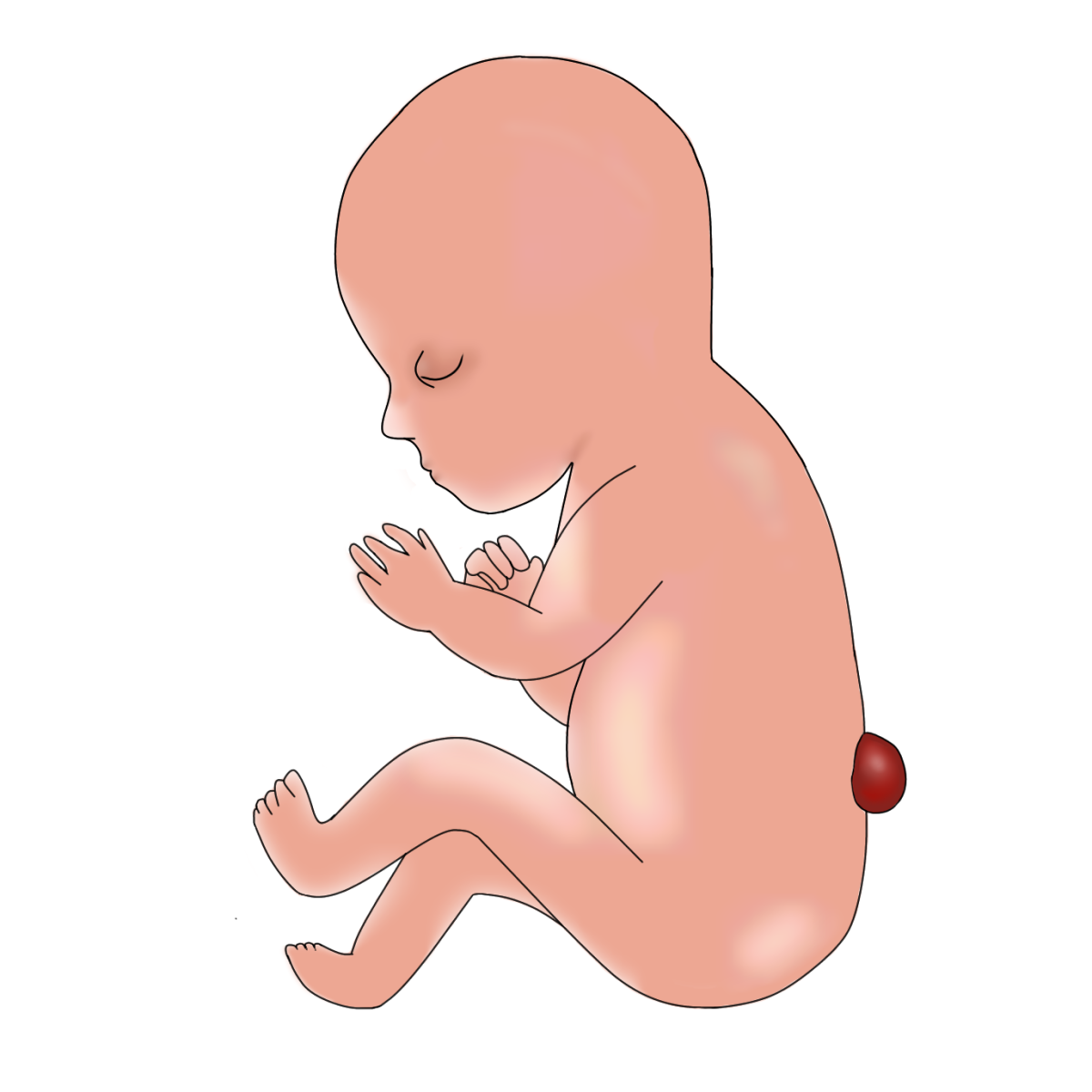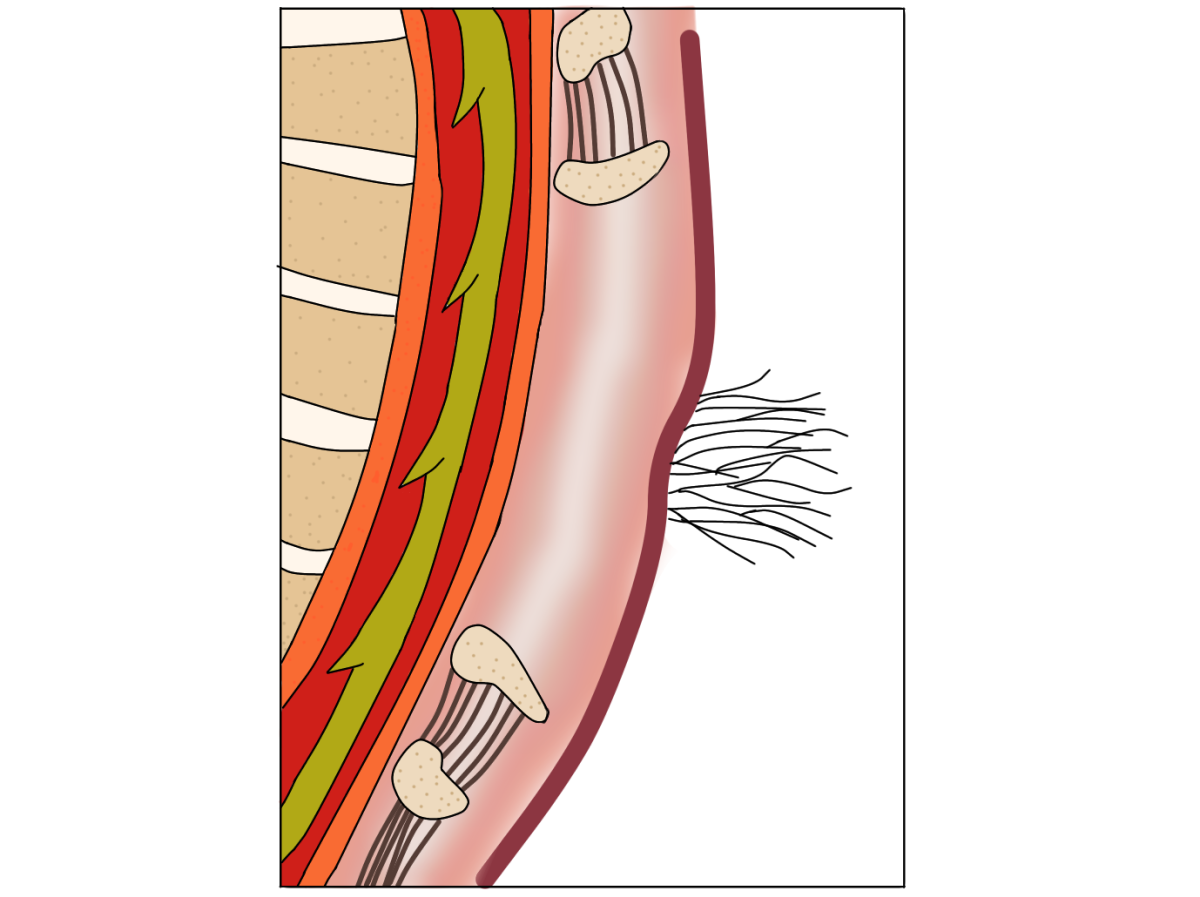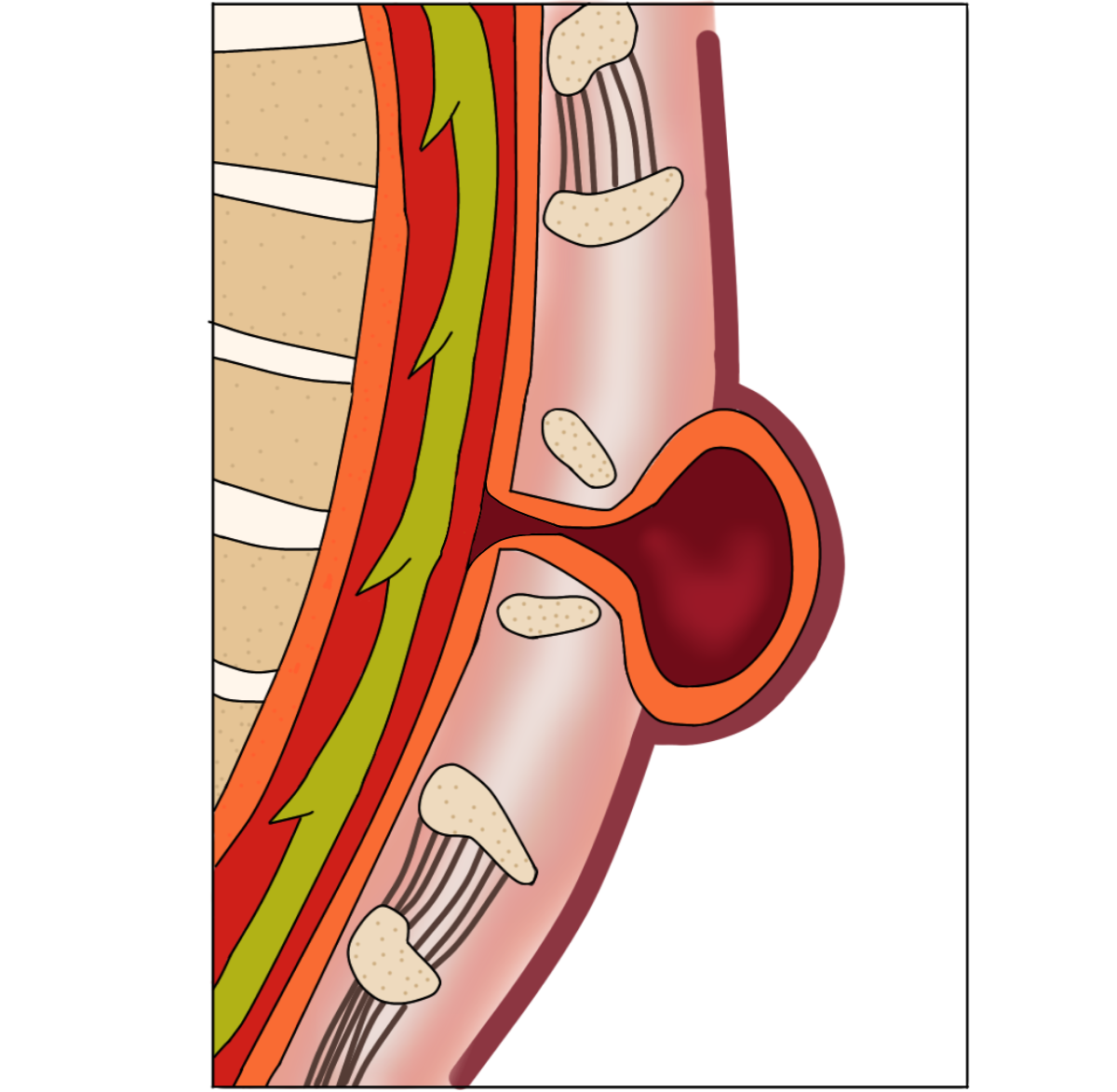- genetickesyndromy.sk - Spina bifida
- ortopedickymagazin.sk - Spina bifida - a serious diagnosis, but not the end of life. It affects up to 300,000 newborns every year.
- sazch.sk - Spina bifida
- nhs.uk - Spina bifida
- mayoclinic.org - Spina bifida
- chop.edu - Spina Bifida Causes, Symptoms and Treatment
- healthdirect.gov.au - Spina bifida
Spina bifida: what is spina bifida and what forms are known?

Spina bifida is a developmental genetic disorder that affects the spinal cord and spinal cord in the developing fetus.
Most common symptoms
- Feeling of heavy legs
- Headache
- Joint Pain
- Limb pain
- Leg Pain
- Constipation
- Tingling
- Erectile dysfunction
- Mood disorders
- Back Pain
- Muscle weakness
Characteristics
Spina bifida, also known as spina bifida, is a congenital developmental defect of newborns.
This developmental anomaly affects part of the spine and spinal cord.
With spina bifida, the neural tube does not completely close during fetal development, and the vertebrae do not close into an arch. A gap is created through which the spinal cord and spinal nerves protrude.
These defects occur in the first trimester of pregnancy, approximately 4 weeks after conception.
The incidence is 1 in 1000 newborns.
A baby born with spina bifida requires lifelong care from specialized doctors and therapists.
Fortunately, this diagnosis does not end in death in most cases. People affected by spina bifida can live a meaningful life with the possibility of becoming independent in adulthood.

With a greater extent of disability, there is most often impaired function of the lower limbs, reduced bladder control of varying degrees. With severe spina bifida, children often also suffer from hydrocephalus.
Most of the cases of children after surgery live a normal life. Children go to normal schools, live to adulthood, on average to 30-40 years.
Spina bifida is divided into three basic types
The division of types is determined by the extent of damage to the spinal cord, spinal cord sheaths, nerves and individual vertebrae.
Spina bifida occulta
Spina bifida occulta is a hidden spina bifida. The spinal arch is split, but the spinal cord remains in the vertebral foramen and is intact.
This type is common and can be detected during a routine examination in the doctor's office.
Hidden spina bifida is manifested by more pronounced hair and darker skin discoloration over the affected part of the spine.
It is one of the most common and mildest types. Many people with this form are not even aware that they have a malformation.
It occurs in 10-20% of people.

Meningocele
Meningocele is the extrusion of the spinal cord sheaths through a hole in the vertebra. The spinal cord remains intact and develops normally. This type has minimal or no lasting effects after surgical correction.

Myelomeningocele
Myelomeningocele is the most severe type of spina bifida. It involves the splitting of the neural tube. The spinal cord with its spinal cord sheaths is pushed through the opening.
One or more vertebrae are not closed.
In this type, the spinal cord is severed. The damage can be severe and cause paralysis of the lower limbs and incontinence (spontaneous leakage of urine and stool).
This form of spina bifida is covered by soft skin in some cases, but usually the tissues and nerves are exposed.
With an open spinal cord, the child is susceptible to infection.
_1.jpg)
Spina bifida in adulthood
Again, this is a congenital defect that was not detected during pregnancy and the child's development. Symptoms did not appear until adulthood. Spinal and leg pain and unexplained muscle weakness began to appear.
Referral for investigations such as X-ray of the spine, CT scan of the spine revealed spina bifida only in adulthood.
In this case, it is usually only a minor disorder that did not cause problems during the child's development.
Prevention of spina bifida
It is recommended to take folic acid at least one or more months before a planned pregnancy.
Folic acid reduces the risk of spina bifida by 75%.
Causes
The cause of spina bifida is unknown. However, genetic, nutritional and environmental influences play a role.
There is much debate about the use of folic acid during pregnancy. Its deficiency in the mother's diet can lead to disorders of spinal and neural tube development.
Genetics also play an important role. If a child inherits a problematic gene from one parent, he or she may develop spina bifida.
The risk factors are
- Use of certain types of medication, especially to treat seizures
- Obesity
- Diabetes mellitus that is not properly treated
- Alcohol use
- Increase in body temperature in the first few weeks of pregnancy due to fever, sauna, jacuzzi, thus overheating the body of the pregnant woman
Symptoms
Symptoms depend on the size and location of the cleft.
A spina bifida in the higher part of the spine is likely to cause mobility problems, even paralysis of the lower limbs.
Localised spina bifida in the middle or lower spine can cause incontinence (spontaneous leakage of urine and stool).
In some cases, hydrocephalus develops in children along with the cleft. Hydrocephalus is caused by an increased amount of cerebrospinal fluid in the brain. It causes it to become congested and increases intracranial pressure. Children with hydrocephalus later have difficulty learning and concentrating.
Symptoms according to the type of cleft
Spina bifida occulta has no symptoms that make life difficult because the spinal nerves are not damaged. There may be visible symptoms on the skin over the cleft, such as increased hair in that area, the appearance of a small dimple or a mole.
Meningocele can cause impaired bladder and bowel elimination.
Myelomeningocele is the most severe type. It leaves the spinal canal open, from which the membranes, spinal cord or even spinal nerves protrude.
The cleft may be covered by skin but is usually open.
Symptoms
- Complete or partial paralysis of the lower limbs
- Decreased sensitivity or loss of sensation in the lower limbs (the child does not feel hot or cold)
- Urinary and faecal incontinence associated with impaired defecation
- Impaired bone development, tissue and fat deposition at the cleft site
- Hydrocephalus
- Shrinkage of the posterior chamber of the skull and bulging of the spinal canal
- Cognitive impairment (thinking, memory, learning, speech)
- Sexual dysfunction
Problems with movement
The brain uses nerves to control the motor system. Any damage to the spinal cord and its nerves can cause impaired muscle control.
This is why most children with spina bifida have problems with lower limb mobility, ranging from some degree of weakness to paralysis.
The lower limbs are not used, and as a result, the muscles in them become flaccid. Because of this, there is also impaired bone development in the form of dislocation, joint deformity and curvature of the spine.
Problems with urinary excretion
When the spinal cord is disrupted, problems with incontinence, retention of urine and subsequent spontaneous excretion can occur.
Symptoms of bladder dysfunction
- Urinary incontinence (spontaneous leakage of urine)
- Frequent urinary tract infections
- Accumulation of urine in the kidneys resulting in swelling of one or both kidneys, called hydronephrosis
- Scarring of the kidneys
- Formation of kidney stones
Bowel motility disorders
Damage to the spinal nerves controlling the colon and sphincters causes reduced or no control over the excretion of stool. In this case, constipation often occurs with subsequent episodes of diarrhoea.
Hydrocephalus
Excessive fluid accumulation in the brain puts pressure on the brain and can cause damage and other complications in mental as well as physical development. Some children with spina bifida develop hydrocephalus because of this.
However, most children with hydrocephalus have normal mental development and intelligence levels. However, they may have learning disabilities.
Children with spina bifida and hydrocephalus may develop
- Attention deficit disorder
- Difficulty with problem solving
- Reading disabilities
- Impaired perception and comprehension of rapid speech
- Difficulty making detailed plans
- Physical and visual coordination disorders (tying shoelaces, buttoning buttons)
Diagnostics
Already during pregnancy, a screening examination can determine whether the child has a developmental defect. If it is suspected, an amniocentesis is performed.
In some cases, it may not be detected during pregnancy and is only detected after birth. In this case, it is usually a mild form of cleft.
Prenatal diagnosis by screening examination to detect fetal development and possible disorders is carried out in the second trimester between 20 and 22 weeks of pregnancy using fetal ultrasound and blood sampling.
Read also: ultrasound in pregnancy: fetal size, what is fetal biometry?
Fetal magnetic resonance imaging is used to confirm the presence of spina bifida and to determine its exact extent.
Fetal echocardiogram to detect possible heart disease during development.
Amniocentesis to confirm the presence of elevated levels of AFAFP (alpha-fetoprotein) and AChE (acetylcholinesterase) confirming spina bifida in the developing fetus.
MSAFP blood test for elevated maternal AFP levels.
Postpartum diagnosis
Postpartum diagnosis can be made in milder cases by X-ray or MRI scanning of the spine.
Course
Children with spina bifida can lead an active life.
Their prognosis depends on the severity of the damage and personal factors.
Most children are not mentally or intellectually impaired and develop like normal children. Most can walk, some use crutches and some are wheelchair bound.
Children with spina bifida are more prone to complications.
- Problems with walking and lower limb mobility
- Orthopedic complications such as curvature of the spine, hip dislocation, abnormal growth, bone and joint deformities, muscle contractures (pathological muscle contraction)
- Problems with urinary and faecal excretion
- Hydrocephalus, accumulation of fluid in the brain and subsequent insertion of a drainage tube to drain the brain can cause headaches, vomiting, increased drowsiness, irritability, swelling and redness along the drainage, seizures
- meningitis
- Breathing disorders during sleep
- Skin problems in the legs, buttocks and back due to numbness in the lower limbs and possible wound formation
- Allergy to latex
- Other illnesses such as urinary tract infections, kidney disease, gastrointestinal problems, learning disabilities, depression and others
Prognosis of spina bifida
14% of children with severe spina bifida die by the age of 5 due to complications caused by brain herniation (displacement of the hindbrain into the large head opening due to increased intracranial pressure).
In 85% of patients with severe spina bifida with hydrocephalus, a drain must be inserted into the brain to drain excess fluid from the brain. 45% of patients develop complications after the drain is inserted within one year of life.
How it is treated: Spina bifida
Treatment of spina bifida: a cure? Surgery and special care
Show moreSpina bifida is treated by
Other names
Interesting resources










